

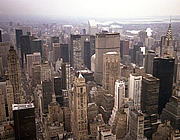
Entering New York the adrenalin kicks up a notch - it has a uniquely exciting feel to it.
As a big Art Deco fan I was spoilt for choice, and at the other end of the scale completely amazed by the beautiful Twin Towers of the World Trade Centre.
A buzzing 24 hour city full of fantastic sights.
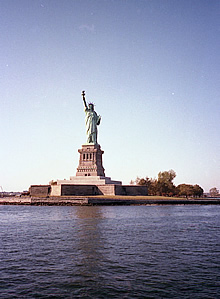
In the 80s I visited several times, staying with friends in New Jersey, or Long Island, or upstate New York, seeing the summer heat and the Christmas glitz and, on my last visit, staying in a matchbox-sized hotel room to attend a conference (university budgets being somewhat constrained) and so getting just a glimpse of what it must be like to work in this great city.
Manhattan is actually only one of the five boroughs of New York City, the other four being the Bronx, Queens, Brooklyn and Staten Island.
Before the first Europeans arrived the area was occupied by Indians practising agriculture and hunting. The Dutch were the first to form a settlement here, naming it New Amsterdam in 1625. In 1626 Manhattan was formally purchased from the Indians for the equivalent of a few dollars by Dutchman Peter Minuit. Peter Stuyvesant, the Director-General of the community, had a wall built around the settlement in 1653, on the site of the present day Wall Street.
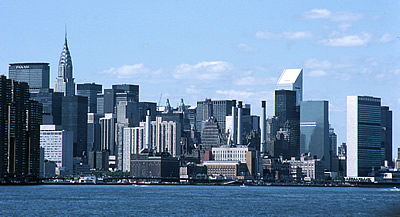
The English took Manhattan in 1664 without bloodshed and renamed it New York after King Charles II's brother, the Duke of York.
In 1783 at the end of the War of Independence, England recognised the independence of the thirteen colonies.
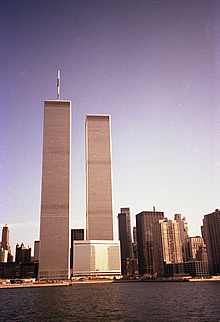
One of the best ways to get an idea of the size and layout of the city is on a boat trip around the island of Manhattan. So good I've done it twice! Both times on the Circle Line. Andrew also did this tour and we both think it provides a great overview of Manhattan as well as a close-up of the Statue of Liberty.

The dock for the boat is at West 42nd Street. We travelled south down the calm Hudson River: on the right shore the state of New Jersey.
The first hugely recognisable landmarks were the 110 storey Twin Towers of the World Trade Center which was opened in 1970, over a quarter of a mile high they are sadly no longer in existence, but more on these magnificent buildings below.
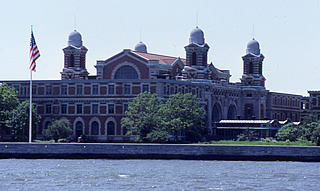
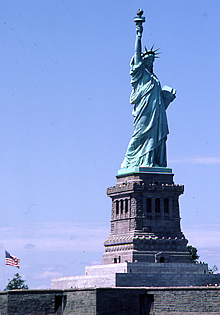
Then we headed out into more open water passing Ellis Island, where immigrants were recorded, and on to the Statue of Liberty standing at the harbour entrance, a welcoming sight for countless immigrants since 1886. This imposing statue was a gift from the French people. On its pedestal the tip of the flame is 305 feet above sea level.
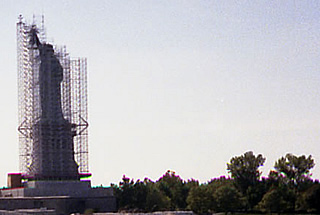

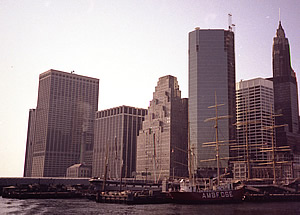
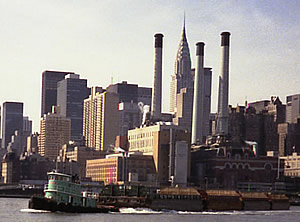
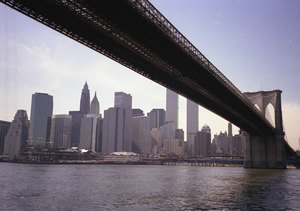
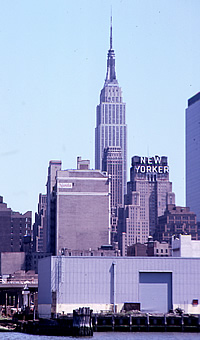
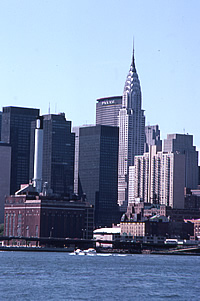
Turning back to Manhattan the view is tremendous. Then passing the South Street Seaport and the Ambrose Lightship. This ship marked the Ambrose Channel - the main shipping channel into the port of New York.
Under the Brooklyn Bridge and up the East River - Manhattan is quite narrow at this point. At the time it was opened in 1883 it was the longest suspension bridge in the world: 6775 feet long, including approaches, with a central span of 1595 feet.
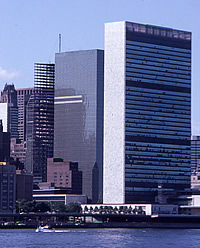
Many workers suffered from decompression sickness in the building of the underwater foundations - the caissons in which they worked were filled with compressed air to prevent water getting in. They had to undergo slow adaptation to normal pressure when returning to the surface. Even the engineer, Washington Roebling, who was completing the bridge designed by his father John Augustus Roebling, was overcome with the sickness. His father had died after contracting gangrene in a foot crushed while working on the bridge.
Continuing on up the East River several familiar buildings gradually come into view: the Empire State Building, the Pan Am Building, the Chrysler building, the UN.
The UN complex is the official headquarters of the United Nations. The forerunner of the UN was the League of Nations, created in 1919 after the First World War it was abandoned when it failed to prevent the Second World War. The UN officially came into existence after the Second World War on 24 October 1945.
The UN undertakes peacekeeping and humanitarian missions around the world.

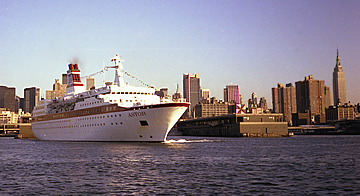
Further north we entered the relatively narrow channel of the Harlem River with the Bronx on the east and Yankee Stadium. Around Tryon Park at the wooded northern tip of the island the boat re-enters the Hudson and continues south, with the New Jersey Palisades on the west shore. Lower down are berths for ships - the aptly named Cruise Liner Astor was just pulling out on one trip.
It's about three hours for the round-the-island tour and is a very relaxing way to see some of the major sights. Of course, you have to get up close too, but some of these buildings are so huge that it's really difficult to see them and get good photographs from the streets - you need to go up high or onto the rivers.
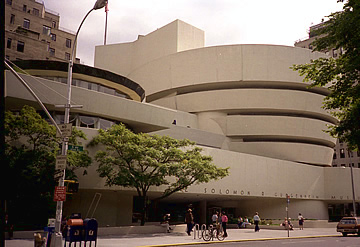
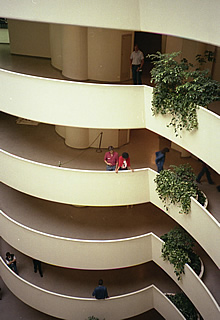
On Fifth Avenue, between 88th and 89th Streets on the eastern edge of Central Park, is the Guggenheim Museum. A fantastic piece of architecture by Frank Lloyd Wright. A spiral of pale concrete creates a building quite unlike anything else in New York.
It was paid for by Solomon R. Guggenheim, an enthusiastic collector of modern art which today forms the core of the Guggenheim Museum. Inside the floors spiral upwards on a sloping ramp around the central axis of the building.
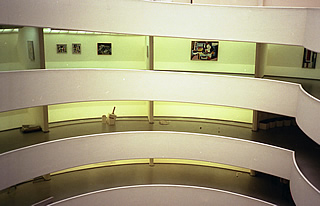
It has the largest Kandinsky collection in the world and Impressionism is strongly represented by many of the big names: Renoir, van Gogh, Degas, Manet, Cézanne plus a large number of Picassos. There is also a great Henri Rousseau "Rugby Players". For me, though, the biggest attraction is the building itself.
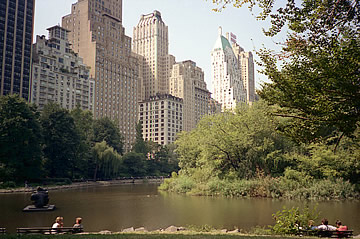
Central Park is truly enormous: 840 acres of zoos (2), ice rinks, various sporting and recreational facilities, lakes and ponds and acres of trees. On my visits I only really scraped the surface of what this peaceful area has to offer (and I don't like zoos!) but it must be the biggest asset that the city offers residents and visitors alike.

About half way down the east side of the park is the Metropolitan Museum of Art. Founded in 1870 it moved to its present home ten years later, the current building being begun in the early twentieth century and new wings steadily added. It has a huge collection of paintings, sculpture, artefacts, costumes and all manner of art from all over the world and many civilisations.
It's impossible to do justice to such big institutions unless you live nearby. Rembrandt, Dürer, Georges de la Tour, Vermeer, Raphael, Bruegel, Holbein the Younger - too many to mention by name - are all well-represented. I recommend taking a look at some American artists too, such as Winslow Homer's "Inside the Bar", Edward Hopper's "Tables for Ladies" and Edward Steichen's photograph of "The Flatiron". I haven't yet made it to the Cloisters - the branch of the museum in Fort Tryon Park which houses a collection of medieval art, including the famous unicorn tapestries.
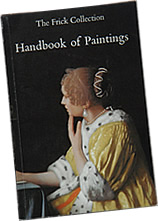
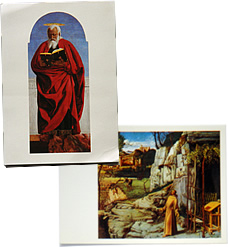
South of the Metropolitan, but still on Fifth Avenue on the edge of the park, is the Frick Collection. Founded by Henry Clay Frick, a Pittsburgh coke and steel industrialist, the collection is housed in his former home, a large mansion on the corner of 5th and E70th. Spanning the centuries this is another fine collection, with for me, the added bonus of a Piero della Francesca: "St Simon the Apostle", though the subject has a question mark. The detail in the Giovanni Bellini "St. Francis in Ecstasy" makes this another favourite.
Both the Frick and the Metropolitan also have a good number of fine Rembrandts.
This early twentieth century mansion is worth seeing in its own right. It feels more like a very well-furnished home than an art gallery, and the central courtyard with its fountain is a peaceful place to find in the centre of the city.
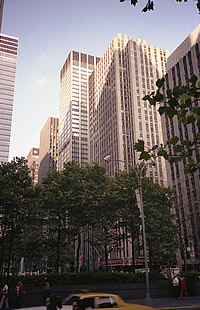
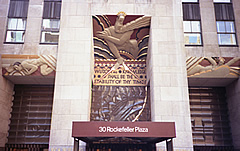
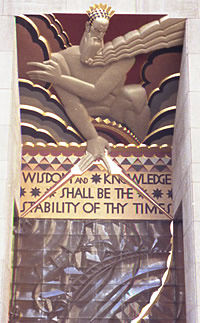
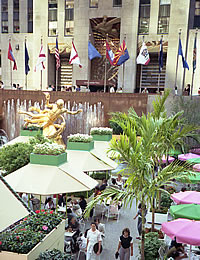 Lower Plaza in summer
Lower Plaza in summer
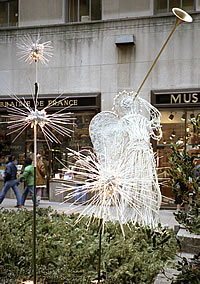 A Christmas Angel
A Christmas Angel
The Rockefeller Center Area is just south of Central Park occupying a chunk of Manhattan between 5th and 7th Avenues and 47th and 52nd Streets. The 19 buildings include the RCA Building, Radio CIty Music Hall, the Exxon Building, the J.C.Penney Building, the New York Hilton and the Museum of Modern Art. John D. Rockefeller Jr. leased the land from Columbia University in 1928 and initiated the building projects.
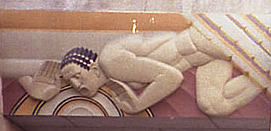
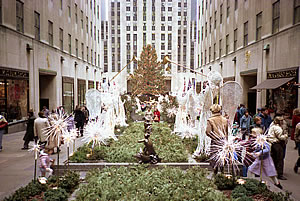
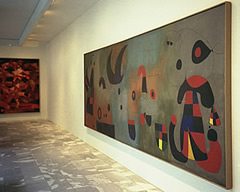
The Channel Gardens (so called because they separate the French and British buildings) are a pleasant series of pools and greenery in Rockefeller Plaza, within the Rockefeller Center Area, leading down to the Lower Plaza, an area below street level which is an outdoor restaurant in summer and an ice rink in winter. In front of fountains at the west end of the Lower Plaza is the golden figure of Prometheus. The RCA Building at 30 Rockefeller Plaza is the tallest of the Rockefeller skyscrapers at seventy storeys high, and has some fine Art Deco at its entrance.
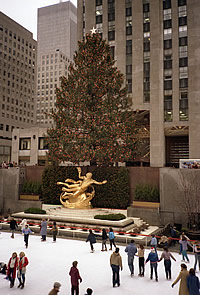 Lower Plaza at Christmas
Lower Plaza at Christmas
The Museum of Modern Art was founded in 1929 and the building here was erected in 1939. Devoted, naturally, to modern art, it has some notable pieces including "The Starry Night" by Vincent van Gogh, "The Dream" by Henri Rousseau, "The Persistance of Memory" by Salvador Dali, and "The Dance" by Henri Matisse.
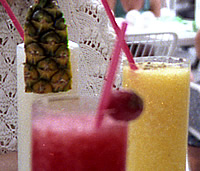
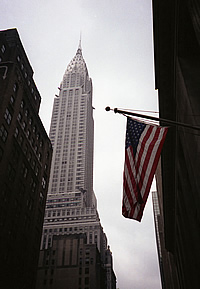
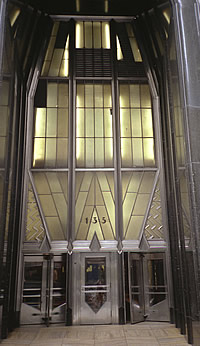
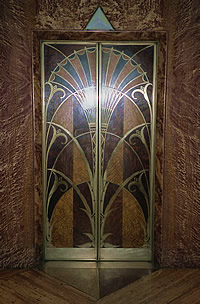
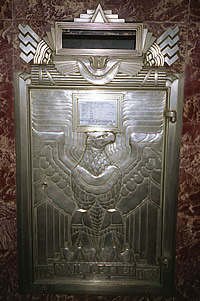
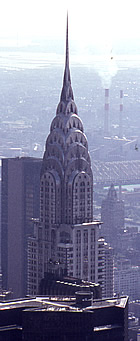
My absolute favourite building in New York - the epitome of the more flamboyant Art Deco architecture. Designed by William van Alen for the Chrysler Corporation and built in 1928-30, it was one of the first buildings to incorporate large amounts of steel on its exterior. Art Deco features include the spire of the building which resembles the Chrysler radiator grille, the Chrysler eagles extending from four corners, the geometric stepped ziggurat design, Egyptian elements in the lavish interior. It was briefly the tallest building in the world until the Empire State was completed the following year.
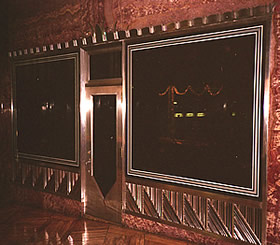 Polished steel, wood and marble inside
Polished steel, wood and marble inside
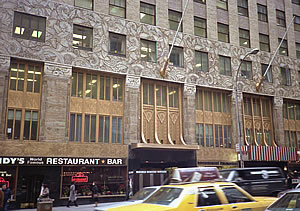
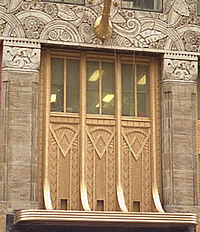
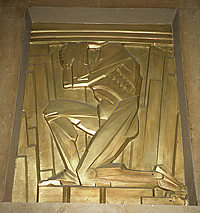
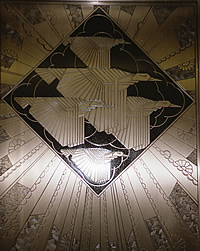
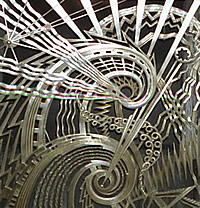
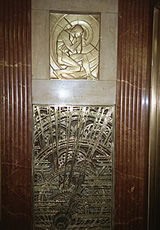
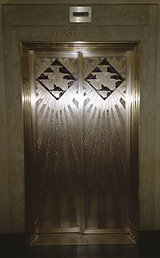
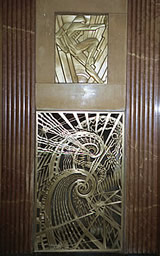
Across from the Chrysler, on East 42nd Street, on the corner of Lexington, is another of the greatest Art Deco buildings in New York, at least for its decorative elements: the Chanin Building, architects Sloan & Robertson. Built for Irwin Chanin in 1929 the exterior incorporates bronze, marble and metal. The exterior relief decoration was all custom-designed by Edward Trumbull and the fabulous interior decoration is by Jacques Delamarre and Renee Chambellan.
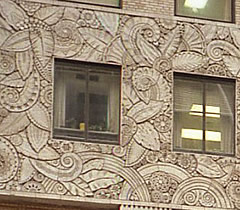
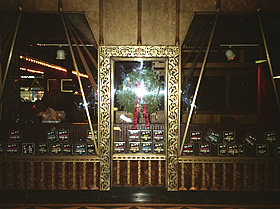
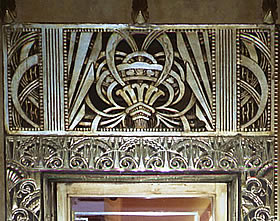
Nearby on Park Avenue is Grand Central Station. Completed in 1913 in the Beaux Arts style it is worth looking into alone for the enormous Grand Concourse: 275 feet long, 120 feet wide and ten storeys high.
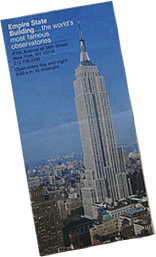
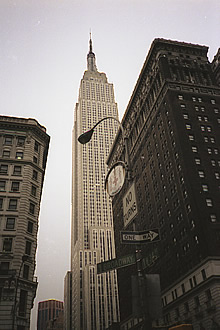
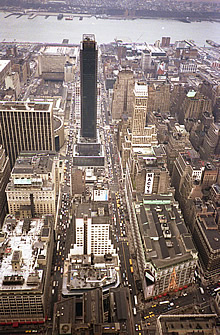
The building named for the state of New York, the Empire State, was completed in 1931 and instantly became the tallest building in the world, though the 222 foot television antennae wasn't added until 1951 to bring its height to 1472 feet.
An Art Deco skyscraper of quite austere design, its spire was meant as a docking point for dirigibles but this idea was abandoned as too dangerous due to the powerful updrafts caused by the building itself.
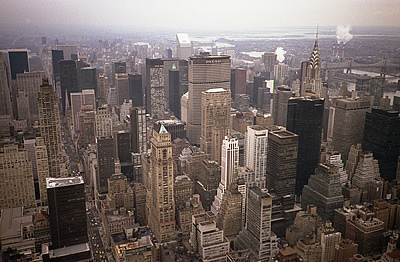
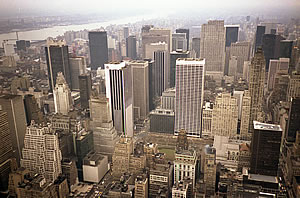
Viewing New York from the observatories is a must - it complements the Circle Line in giving a clear idea of the layout of the city.
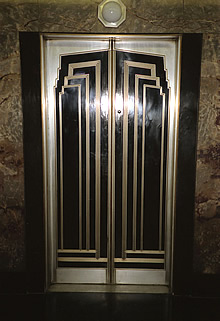
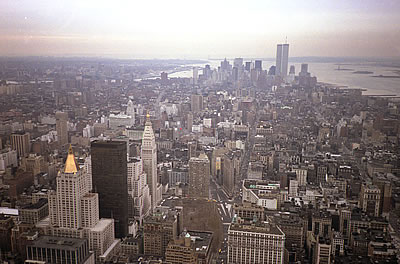
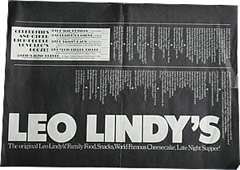
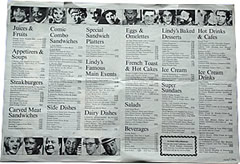
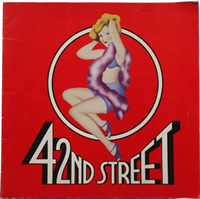

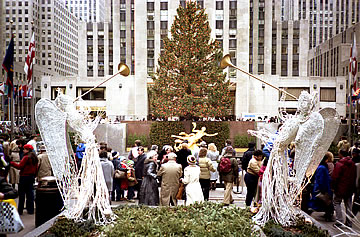
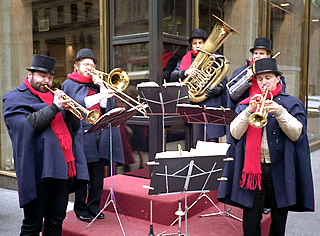
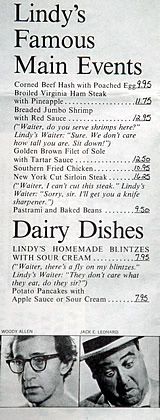
Having read about Lindy's (as Mindy's) in Damon Runyon's stories, I had to come and try the New York cheesecake. Far removed from the sometimes sickly sweet concoctions we have in Europe, this is the real deal, and in my opinion the best. I didn't sample any other food here but I'd definitely recommend the cheesecake! The establishment I went to was the one on 1250 Avenue of the Americas at 50th Street, but you can see in the Chanin Building photographs above that there is one there too. The original Lindy's was opened in 1921 and became established in various locations. All eventually closed but the name was acquired by the Riese Organisation in 1979 who proceeded to reintroduce Lindy's to New York.
The waiters at Lindy's were famously droll / rude and the menu I have illustrates the character of the place: Lindy's waiter: "Tea or coffee?", Customer: "Coffee without cream", Waiter: "You'll have to take it without milk, we have no cream."
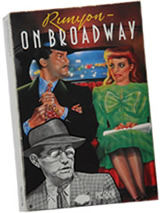

Damon Runyon was a newspaperman who wrote evocative stories of life on Broadway peopled by distinctive characters such as Harry the Horse, Dave the Dude and Ickey the Pig - highly recommended.
On Broadway I think the only thing to see in theatre is a musical. I tried several shows: "42nd Street" is great; "My One and Only", with Twiggy, not so great and "Glengarry Glen Ross" worthy but too serious. "Guys and Dolls", "42nd Street" or "A Chorus Line" I think would all be perfect.
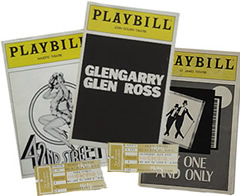
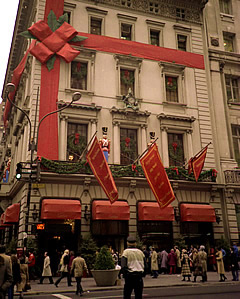
For opera, ballet, classical concerts, etc. Lincoln Center is the place to go. I've not actually seen any performances here but the fountains outside are good!
For another great spectacle Madison Square Garden is hard to beat - I was lucky enough to see the New York Knicks play my "own" team the Boston Celtics with the great Larry Bird.
I'm not a great fan of shopping - the sum total of my purchases apart from food and drink ran to books, postcards, a winter hat from Macy's and sunglasses from a street seller - but New York is terrific at Christmas. The stores really go to town, the decorations and window displays are fantastic, there is Christmas music and a general feeling of good will - a really good time to visit.
